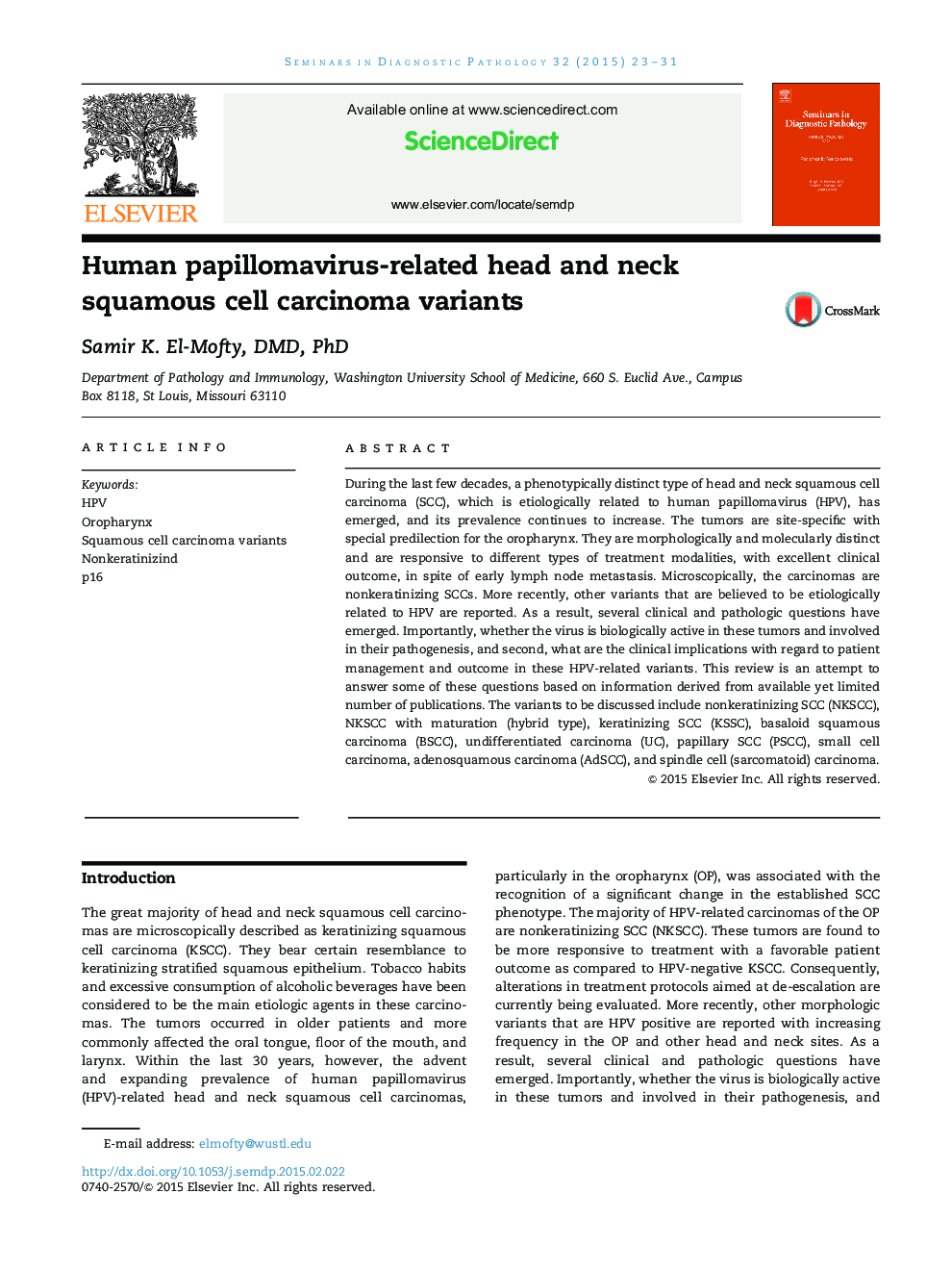| Article ID | Journal | Published Year | Pages | File Type |
|---|---|---|---|---|
| 4138275 | Seminars in Diagnostic Pathology | 2015 | 9 Pages |
Abstract
During the last few decades, a phenotypically distinct type of head and neck squamous cell carcinoma (SCC), which is etiologically related to human papillomavirus (HPV), has emerged, and its prevalence continues to increase. The tumors are site-specific with special predilection for the oropharynx. They are morphologically and molecularly distinct and are responsive to different types of treatment modalities, with excellent clinical outcome, in spite of early lymph node metastasis. Microscopically, the carcinomas are nonkeratinizing SCCs. More recently, other variants that are believed to be etiologically related to HPV are reported. As a result, several clinical and pathologic questions have emerged. Importantly, whether the virus is biologically active in these tumors and involved in their pathogenesis, and second, what are the clinical implications with regard to patient management and outcome in these HPV-related variants. This review is an attempt to answer some of these questions based on information derived from available yet limited number of publications. The variants to be discussed include nonkeratinizing SCC (NKSCC), NKSCC with maturation (hybrid type), keratinizing SCC (KSSC), basaloid squamous carcinoma (BSCC), undifferentiated carcinoma (UC), papillary SCC (PSCC), small cell carcinoma, adenosquamous carcinoma (AdSCC), and spindle cell (sarcomatoid) carcinoma.
Related Topics
Health Sciences
Medicine and Dentistry
Pathology and Medical Technology
Authors
Samir K. DMD, PhD,
